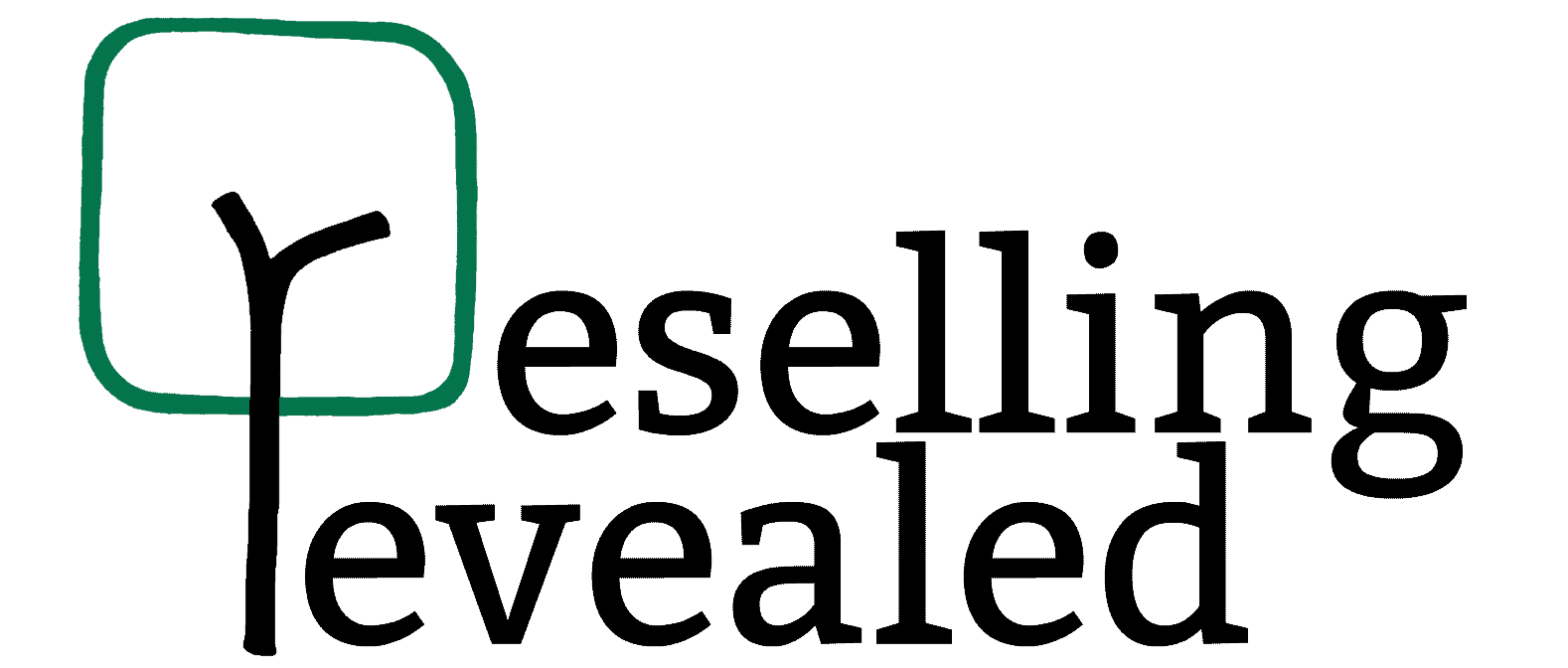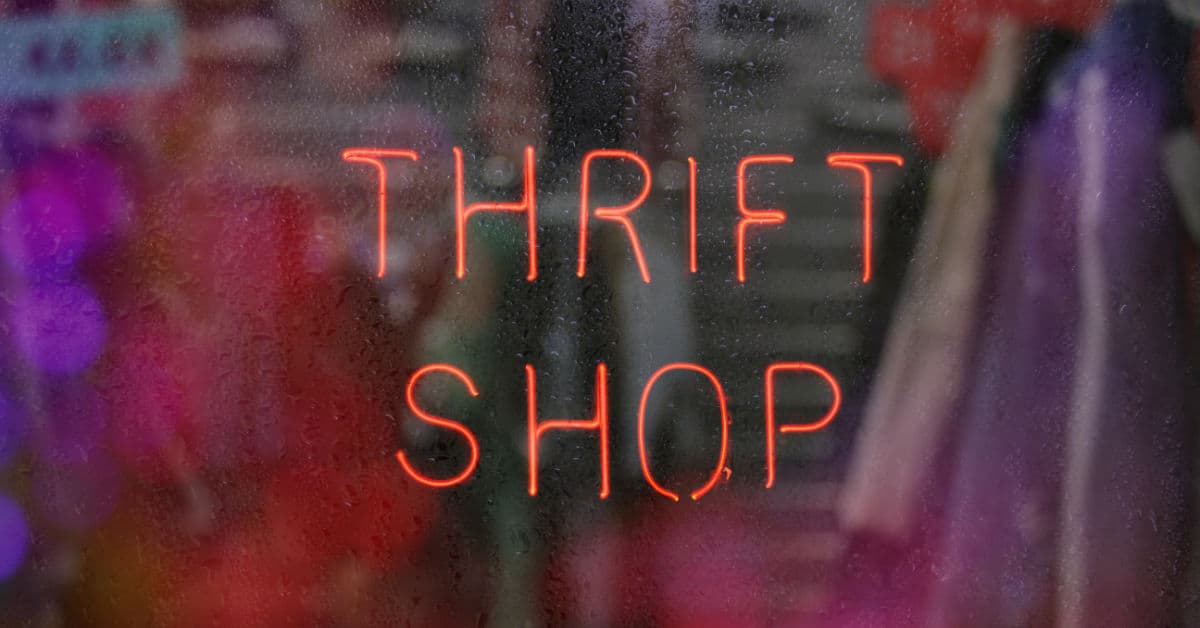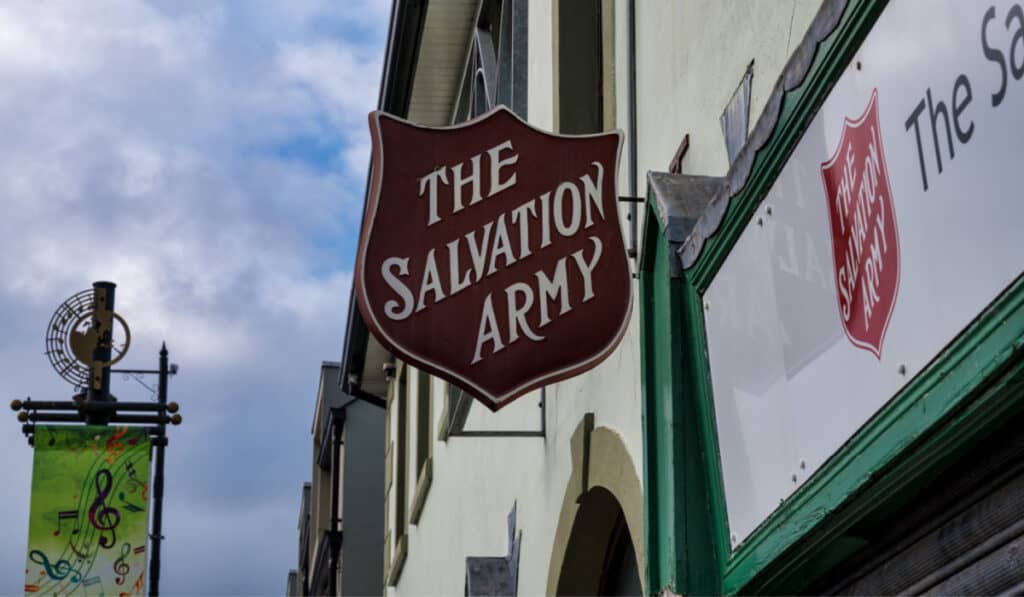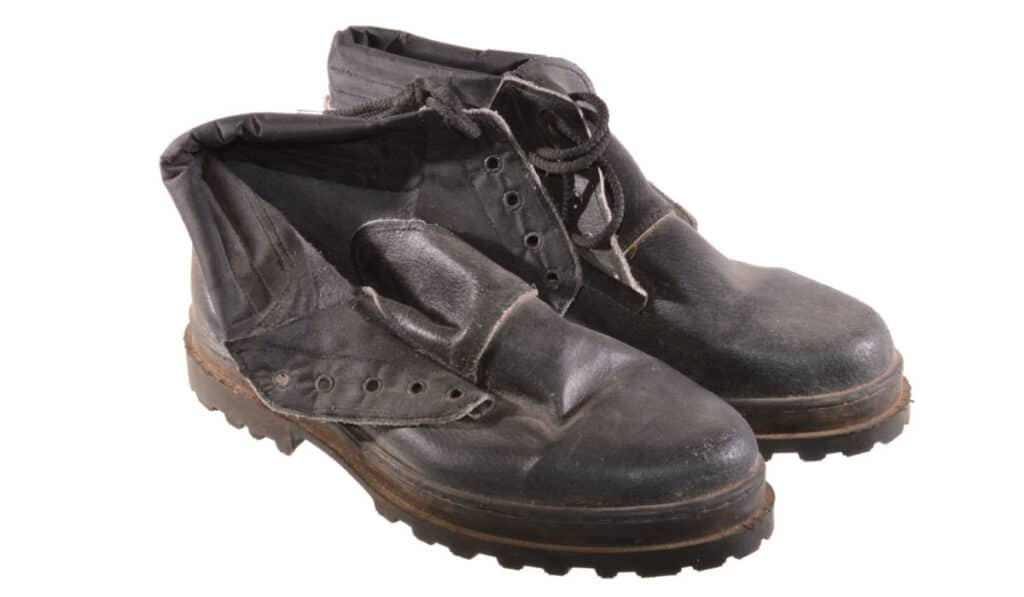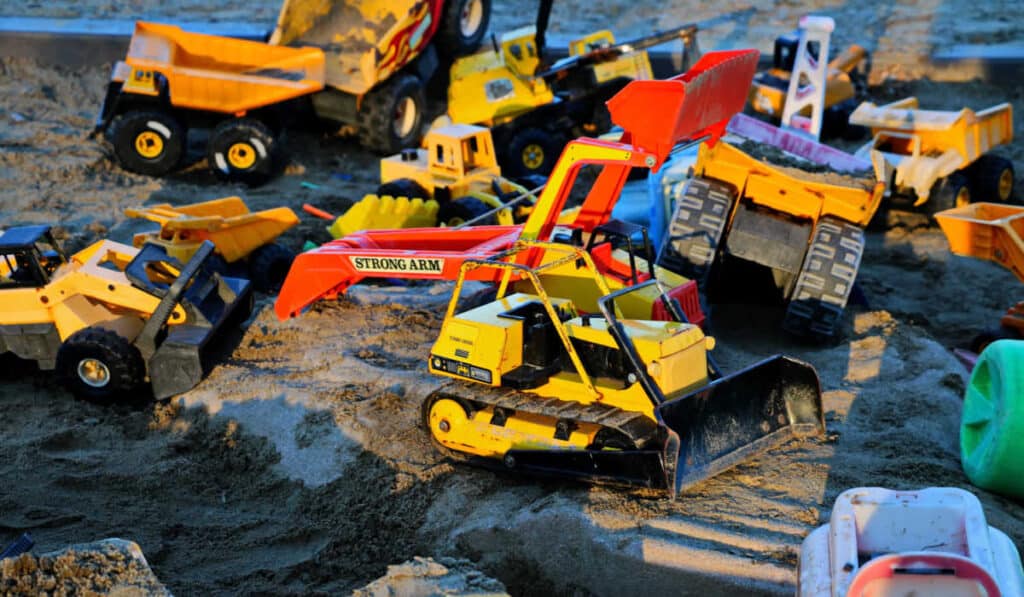As an Amazon Associate I earn from qualifying purchases.
It seems that I can’t drive around town these days without seeing a new thrift store pop up. They all have strange names that don’t actually tell anyone what they sell. So what is a thrift store?
And why do they all look junky?
A thrift store is a store that sells used goods including clothing, electronics, home goods, etc. Typically the goods that they sell are donated by the community and they use the proceeds to give back to the community through employment training, donations, and more.
Some popular thrift stores that you’ve probably heard of include:
- Goodwill (and the Goodwill Outlets)
- Savers/Value Village
- Salvation Army
- Deseret Industries
- Thrift Red, White, & Blue
- America’s Thrift Stores
- Habitat For Humanity’s ReStore
In addition to those larger chains, there are thousands of independent mom-and-pop thrift stores that operate throughout the world.
What Do Thrift Stores Sell?
What a thrift store sells depends on two things: the types of donations they get and what the management decides to put on the sales floor.
In general, however, a thrift store will offer clothing, shoes, home goods, sporting supplies, and electronics.
Larger thrift stores often offer a more limited range of goods as they don’t accept a number of items for liability reasons.
A few things that thrift stores don’t (in general) sell are:
- Very large home or yard items such as swing sets, trampolines, etc.
- Building materials
- Sleeper sofas or beanbag chairs
- Firearms/Fireworks
- Medical equipment
- Large auto parts
You’re pretty safe to assume that, unless it’s on that list you’ll be able to find it at a thrift store. You’ll probably see a couple of things on that list for sale as well as thrift store employees often don’t recognize what things are and simply price them.
Thrift Stores vs Second Hand Stores
When it comes to buying used goods, there are two main types of stores to choose from, thrift stores and second-hand stores.
At first blush, they’re the same and offer ostensibly the same service. However, there are a few differences under the hood that may cause you to choose one over the other.
Thrift stores are typically run by non-profit organizations, and they typically sell clothes, furniture, and household items. Second-hand stores, on the other hand, are privately owned businesses that sell a wide range of products, including books, electronics, and even cars.
Thrift stores are typically run with the intent of making a profit in order to provide value to their community in other ways. They offer employment training, make donations, etc.
Second-hand stores, on the other hand, are for-profit and operate with increased revenue in mind. This often means that their prices are a bit higher and that they source items from many places instead of simply relying on donations.
It’s worth noting, though, that many people don’t understand the difference between thrift stores and second-hand stores so they use the monikers interchangeably.
How To Find A Good Thrift Store – 3 Tips
There are so many thrift stores that it’s important to plan out where you’re going to go before you go out thrifting.
The stores that you choose to go to can make or break the experience.
There are some thrift stores that are dirty and very rarely have anything worth buying. Others are clean, well-stocked, and have friendly staff.
So how do you know where to go? Luckily we have a few guidelines that usually produce good results.
1. Figure Out What You’re Looking For
Different thrift stores specialize is specific types of items. Sometimes it’s on purpose and sometimes it’s simply because that’s what people in the area donate (although there are some things you simply can’t donate to thrift stores).
Figuring what you’re after will help you know where to go:
For Vintage Clothing
Try searching for local thrift thrift stores that specialize in vintage clothing. Typically these are consignment shops or dedicated vintage stores.
Many thrift stores dispose of “older” clothing as they don’t think it will sell well.
For Current/Trendy Clothing
Try the biggest thrift stores in the area. They turn over the most inventory and receive the most donations. While you might have to dig through more stuff there are guaranteed to be a few gems.
For Furniture
Check out local antique stores or consignment shops. If you’re looking for the cheapest furniture possible, Goodwill and Savers often have furniture and price it super low to get it out of the way quickly.
For Household Items
Your best bet is likely a traditional thrift store like Goodwill or the Salvation Army. These stores typically have a wide variety of items, from clothing to electronics to kitchenware, all at reasonable prices.
2. Consider The Area You’re Thrifting In
The best thrift stores are located in affluent areas.
There are two reasons for this. First off, the donations that they receive are likely to be more numerous and of higher quality. Secondly, there are likely to be fewer shoppers in the area that rely on thrift stores to find their clothing and home goods.
Typically this means that you’ll do better in thrift stores located in wealthy suburbs of cities than rural thrift stores or thrift stores in the city itself.
3. Frequent The Large Popular Thrift Stores
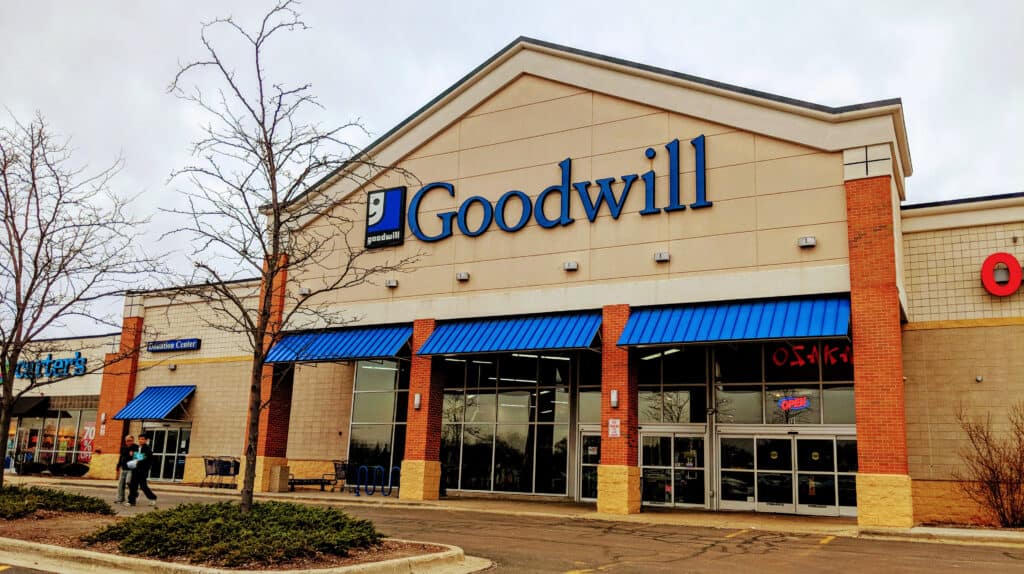
Some people have an affinity for small out-of-the-way thrift stores, and I get it. You never know what you’re going to find, the people are usually cool, and their inventory is often more curated that a chain thrift store.
However, bigger thrift stores usually win out for me for a couple of reasons:
- They have more inventory on the floor. I can look through the rack of clothes at most independent thrift stores in about 5 minutes. Having a dozen racks to look through might be overwhelming but it makes it much more likely that I’ll find something that I want.
- They get more donations and turn over more inventory. Some mom-and-pop thrift stores move inventory so slowly that things can be virtually the same every time even if you go a month between visits. Big thrift stores can move ten thousand items per day and stock new ones just as fast.
- Their prices are usually better. Smaller thrift stores usually rely on every sale to pay their rent and keep their doors open. Often this translates to higher prices, especially as they have fewer items and price them on a more individualized basis. Large thrift stores are looking to move volume so prices are usually the same no matter the brand which leads to some screaming deals.
However, despite all of these guidelines, some thrift stores can be exceptions to the rules.
Small thrift stores can have a few dedicated wealth donors, big thrift stores and sell on eBay themselves and only sell junk in the store, etc.
So, as it turns out, the best solution might just be to go thrifting everywhere you can. Just keep notes and remember which stores and best for what types of items so you can go back in the future!
Conclusion
Now you know both what a thrift store is and how you can find a great one to go thrifting!
I have to warn you though, going to thrift stores is addicting and you might just become hooked on the thrill of the hunt!
